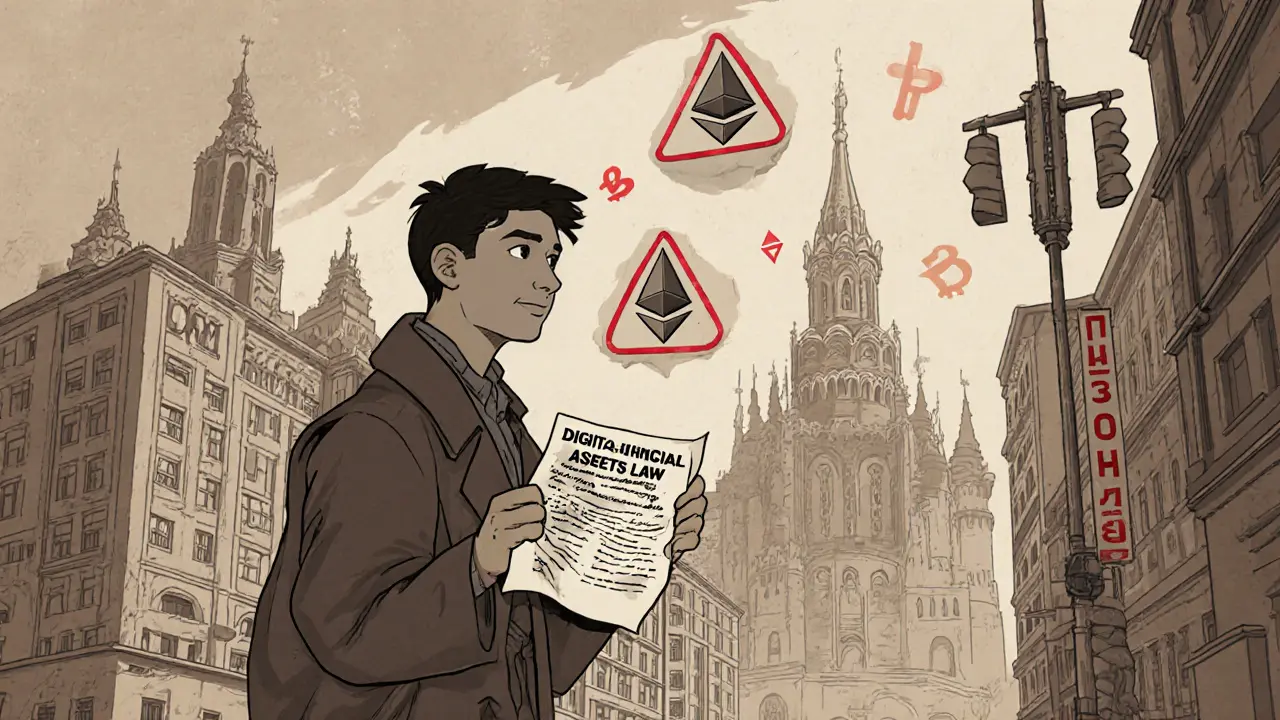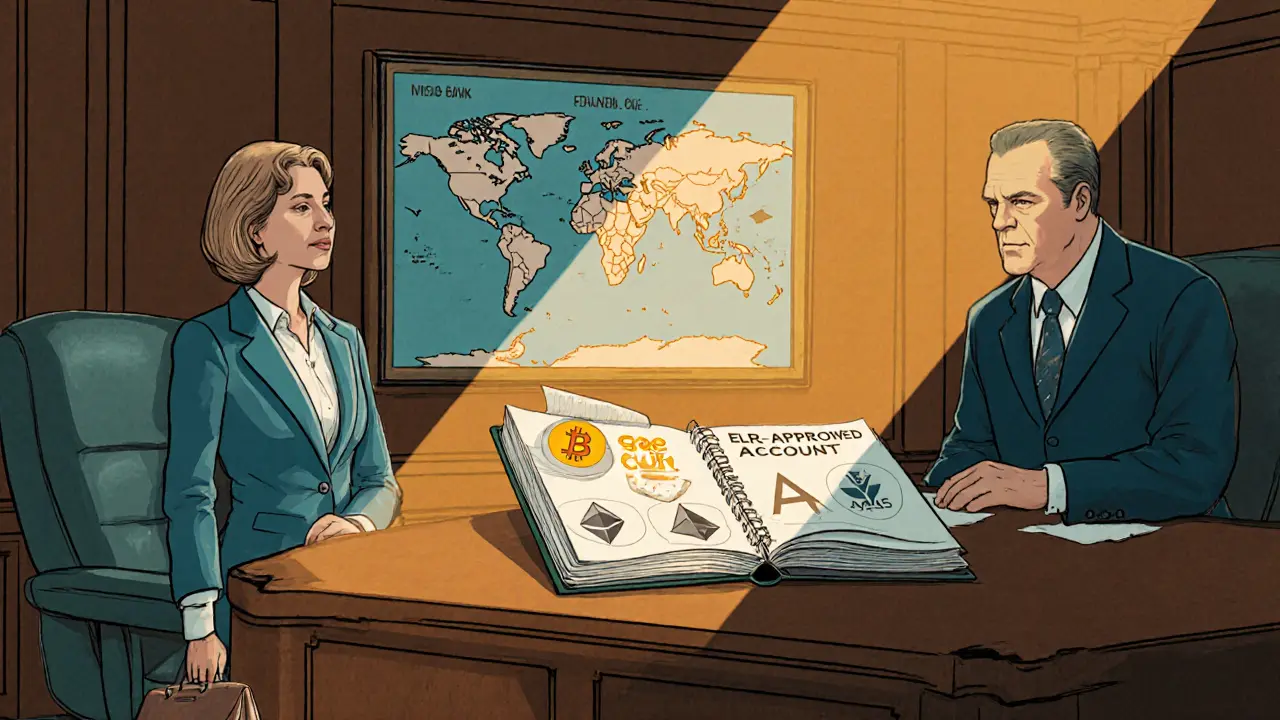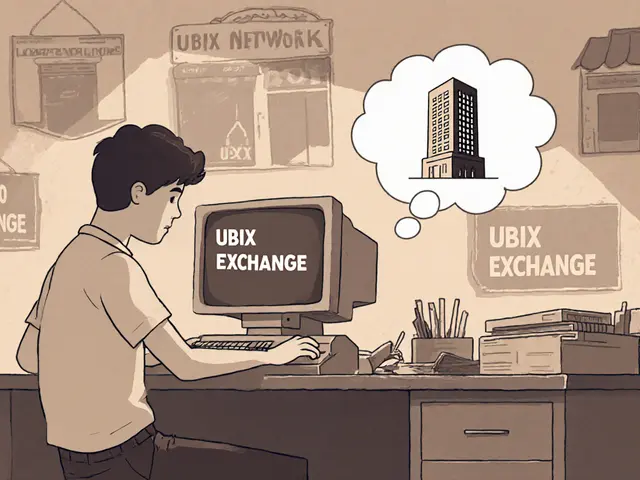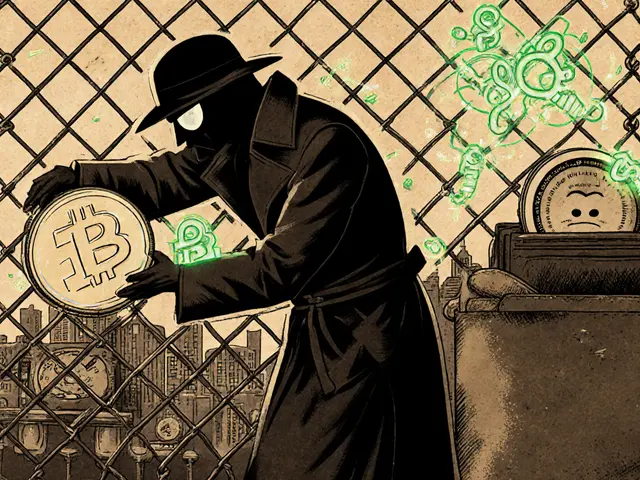
Russia Crypto Compliance Checker
Check Your Compliance Status
Answer the following questions to determine your legal standing under Russian crypto regulations in 2025.
Your Compliance Status
If you’re trying to keep your crypto activities alive while the Russia crypto restrictions tighten, you need a clear, up‑to‑date game plan. In 2025 the rules are a mix of outright bans on retail use, a narrow legal window for qualified investors, and a looming digital ruble that could end any remaining loophole. This guide walks you through what the law actually says, which avenues remain legal, how to stay under the radar, and what you should prep before the digital ruble hits the market.
Understanding the Current Russian Crypto Landscape
First, let’s decode the regulatory puzzle.
- In 2020 Russia adopted the Digital Financial Assets Law (a framework that bans retail crypto payments and subjects illegal mining to heavy fines).
- The Central Bank of Russia (the regulator that freezes accounts involved in peer‑to‑peer crypto trades and imposes 200,000‑ruble fines for unauthorized mining) enforces a strict monitoring regime on ATM withdrawals, large transfers, and unusual transaction patterns.
- Only a tiny slice of the market operates under the Experimental Legal Regime (ELR) (a state‑approved channel that lets "highly qualified" investors use crypto for cross‑border settlements).
- State‑backed stablecoins like A7A5 (a ruble‑backed token that moved $41.2billion in July2025) are preferred for sanctioned trade.
- Foreign exchanges such as Garantex (once a major Russian‑focused platform, now seized by U.S. authorities) are off‑limits for most locals.
The net effect? Retail users can’t buy, sell, or spend crypto on Russian soil unless they qualify as a “highly qualified investor” and stay inside the ELR. Anything else risks account freezes, cash‑withdrawal limits, or even criminal prosecution.
Legal Channels: Using the Experimental Legal Regime
While the ELR is narrow, it’s the only fully legal path for crypto‑related business.
- Achieve qualified‑investor status. You need to prove a net worth of at least 2.5million rubles or a yearly income exceeding 5million rubles. Documentation must be submitted to a licensed Russian broker that partners with the Central Bank.
- Open an ELR‑compliant account. These accounts are offered by a handful of approved banks and fintech firms. They support Bitcoin, Ethereum, and a curated list of stablecoins for international settlements.
- Restrict usage to cross‑border transactions. The ELR expressly forbids domestic payments. Use the account to pay foreign suppliers, receive export revenues, or settle sanctions‑evasion contracts.
- Maintain audit trails. The Central Bank requires monthly reports on transaction volumes, counterparties, and KYC data. Failure to file on time triggers automatic freezes.
Even if you meet the investor criteria, the ELR does not protect you from sanctions enforcement abroad. Keep a close eye on any U.S. or EU secondary sanctions that might target your counterparties.

Staying Off the Radar: Safe Practices for Individuals
If you’re not a qualified investor, the safest route is to keep a low profile.
- Use foreign VPNs and exchange accounts. Access non‑Russian platforms (e.g., Binance, Kraken) via a reputable VPN that terminates in a jurisdiction without Russian data‑sharing agreements.
- Avoid P2P trades. The Central Bank monitors peer‑to‑peer marketplaces and can freeze accounts with a single suspicious trade. Stick to order‑book exchanges that enforce KYC and AML.
- Break up large withdrawals. If you need cash, keep daily ATM withdrawals under ₽50,000 and avoid the flagged patterns listed by the Central Bank (e.g., withdrawals at odd hours, sudden limit increases).
- Use privacy‑focused wallets. Hardware wallets keep your private keys offline. When you move funds, route them through a mixing service based outside Russia to obscure the origin.
- Never link your Russian phone number to foreign exchange accounts. The Central Bank can correlate phone‑based verification with ATM activity and flag you for investigation.
These habits don’t make you illegal-they just reduce the likelihood of triggering the automated monitoring tools that the Central Bank relies on.
Tech Tools to Bypass Domestic Restrictions
Below is a quick rundown of tools that Russian users commonly deploy to keep crypto flowing.
| Tool | How It Works | Risk Level |
|---|---|---|
| VPN with Russian‑friendly exit nodes | Encrypts traffic and routes it through a non‑Russian IP, hiding user location. | Medium - VPN providers may log connections. |
| Tor Browser | Routes traffic through multiple relays, making tracing extremely hard. | Low - slower speeds, some exchanges block Tor. |
| Decentralized Exchange (DEX) aggregators | Swaps tokens on-chain without a central server, bypassing local exchange bans. | Medium - on‑chain transactions are still visible to Russian authorities. |
| Mixing/Tumbling services | Obfuscates transaction history by pooling and redistributing coins. | High - many services are illegal in Russia and can be shut down. |
Always pair these tools with strong operational security: use distinct email addresses, enable two‑factor authentication, and keep your software up to date.
Preparing for the Digital Ruble Transition
Russia plans to launch a government‑issued digital ruble in 2026. When it goes live, it will integrate directly with the Central Bank’s monitoring systems, making any off‑ledger crypto activity even easier to spot.
- Convert assets now. If you hold large crypto balances, consider converting a portion to stablecoins that can be exchanged for foreign fiat before the digital ruble’s rollout.
- Set up offshore entities. A foreign LLC can hold crypto on your behalf, providing a legal shield against domestic digital‑currency reporting requirements.
- Watch regulatory updates. The Central Bank releases quarterly bulletins on digital ruble integration. Missed updates could mean non‑compliance penalties.
Early preparation can save you from having to scramble when the state‑backed token becomes mandatory for all digital transactions.
Compliance Checklist for Russian Crypto Users
- Determine if you qualify as a "highly qualified investor".
- If qualified, open an ELR‑approved account and file monthly reports.
- If not qualified, use a VPN or Tor to access foreign exchanges, never engage in P2P trades.
- Keep daily ATM withdrawals below ₽50,000 and avoid flagged withdrawal patterns.
- Store private keys offline; use hardware wallets for long‑term holding.
- Consider mixing services only for small amounts and understand the legal risk.
- Plan asset conversion ahead of the 2026 digital ruble launch.
- Stay updated on Central Bank bulletins and any changes to the Digital Financial Assets Law.
Follow these steps and you’ll dramatically lower the chance of account freezes, fines, or worse.
Frequently Asked Questions
Can I legally buy Bitcoin in Russia in 2025?
Only if you are a "highly qualified investor" and you use an ELR‑approved account for cross‑border settlements. Retail purchases on local exchanges are prohibited and can trigger account freezes.
What are the penalties for illegal crypto mining?
The law imposes a fine of up to 200,000 rubles per violation and can order the seizure of mining equipment. Repeated offenses may lead to criminal charges.
Is using a VPN enough to avoid detection?
A VPN hides your IP, but the Central Bank also monitors transaction patterns. Combine VPN use with low‑profile trading habits for the best protection.
Will the digital ruble make crypto illegal?
The digital ruble will coexist with crypto, but it will tighten reporting requirements. Non‑ELR crypto activity could become easier to trace and face harsher penalties.
How can I become a qualified investor?
You need to submit proof of assets (bank statements, property valuations) showing at least 2.5million rubles in net worth or 5million rubles annual income. A licensed broker will verify and forward your file to the Central Bank.





Comments (6)
Andrew Morgan
I've been using a VPN with Binance for over a year now and never had an issue. Just keep your withdrawals small and dont link your phone number. Simple as that. The Central Bank is watching but they're not magic
Also stop overcomplicating it with ELR nonsense unless you're rolling in cash
Michael Folorunsho
This guide is laughably naive. Anyone who thinks they can outsmart the Russian state with a VPN and some mixing services is either delusional or already in a federal prison. The digital ruble isn't coming-it's already here, embedded in every bank transaction. You think you're being clever? You're just funding the surveillance state with your crypto gambling. Stop pretending this is a game.
Roxanne Maxwell
I just want to say thank you for writing this in such a clear way. I have a cousin in Moscow who's been terrified about this whole situation and I shared this with her. She said it's the first time she's felt like someone actually understands what it's like to hold crypto there without being a billionaire. You did good.
Jonathan Tanguay
Okay so first off the ELR is not some magical loophole its a tightly controlled state apparatus designed to funnel crypto wealth into sanctioned channels and if you think you can use it for anything other than laundering for oligarchs you're seriously mistaken and also the part about avoiding P2P is correct but you missed the fact that most P2P platforms now have AI-driven behavioral tracking that flags even micro-transactions if they occur during non-business hours which is why you need to use a hardware wallet with a burner email and a separate device that has never been connected to any Russian IP address and also you need to rotate your Tor exit nodes every 48 hours because the FSB has been crawling the network since 2023 and they're using machine learning to correlate wallet addresses with ATM withdrawal patterns so if you're not doing all of this you're not just at risk you're already compromised and also the digital ruble will be mandatory for all transactions by Q3 2026 so if you haven't already moved your assets to a foreign trust you're already too late and also why are you still using a phone number for verification in 2025 that's just basic crypto hygiene 101
Ayanda Ndoni
Bro why are you even worrying about this? Just buy some gold and chill. I live in Cape Town and I just bought a bunch of BTC on Luno and sent it to my friend in Johannesburg and no one cares. Russia is just being dramatic. Why stress over something you can't control? Just chill. I'm just saying.
Elliott Algarin
There's something quietly tragic about how we've turned financial survival into a puzzle of evasion. We used to talk about crypto as liberation. Now it's about hiding from the state while pretending you're still free. The real victory isn't in bypassing the digital ruble-it's in remembering why we believed in decentralized money in the first place. Maybe the most radical act isn't using a mixer or a VPN... but choosing to let go.